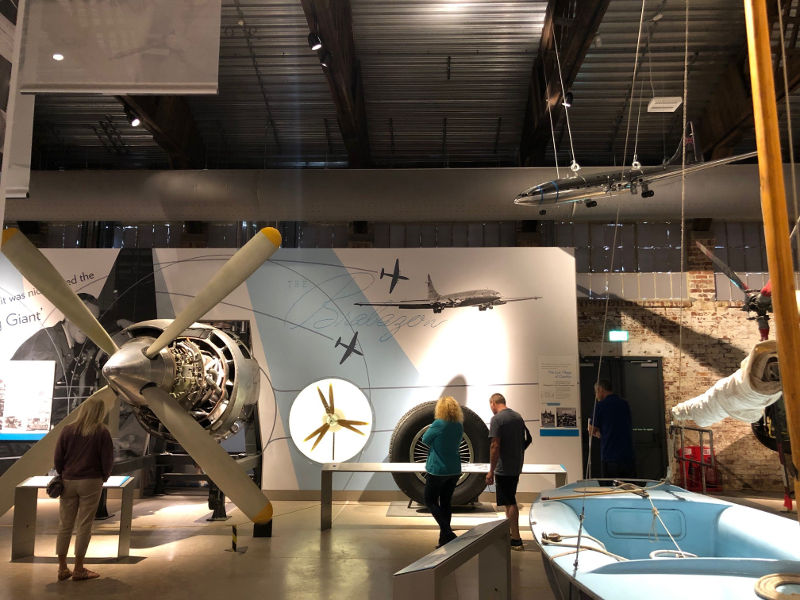70th anniversary of the Brabazon

As you may be aware, this Wednesday marks the 70th anniversary of the first flight of the Bristol Brabazon aeroplane from Filton Airfield (4th September 1949).
While only one complete example of the huge aircraft was ever built (and that has since been scrapped), there some Brabazon parts – including a propeller and wheels – in the exhibition at Aerospace Bristol, as well as a scale model of the aircraft (top right). There are also plans to develop the airfield into a residential and commercial area known as Brabazon.
On 8 March 1910, John Moore-Brabazon became the first person to qualify as a pilot in the United Kingdom and was awarded Royal Aero Club Aviator’s Certificate number 1. When his friend C.S. Rolls was killed in a flying accident later in 1910, Moore-Brabazon’s wife persuaded him to give up flying. However, he remained very visible in aviation and also motor car and sail/motor-boat racing. He joined the RFC in 1915 in a ground-based role, but it was as a Member of Parliament after 1918 that he grew to prominence, becoming Minister of Transport in 1940.
In 1942, he was tasked with setting up a technical committee to investigate the post-WW2 needs of the British Empire’s civilian airliner market. Brabazon’s Committee was formed on 23rd December 1942 and consisted of many of the “great and good” associated with the aircraft industry of the time.
In 1942, the UK and the USA had agreed to split responsibility for building multi-engine aircraft types – the UK focus was on bombers, with transport aircraft being left to the USA. It was soon recognized that as a result of that decision the UK could be left at the end of the war with little experience in the design, manufacture and final assembly of transport aircraft; in addition, it would have little or no infrastructure or trained personnel for doing it.
The Brabazon study was tasked to define, in broad overview, the impact of projected advances in aviation technology and to forecast the global needs of the post war British Empire (in South Asia, Africa, the Near and Far East) and the Commonwealth (Australia, Canada, New Zealand) in the area of air transport, for passengers, mail, and cargo.
The study recognized that the British Empire and Commonwealth, as both a political and economic entity, would have a vital need for aviation systems (principally aircraft) to facilitate its continued existence and self-reliance in the post-war world. For military and commercial reasons, the Empire simply could not continue to exist if it did not understand these needs, and develop the industrial infrastructure to provide the aviation systems and sub-systems necessary to supply and maintain a global air transport service.
For more info and to see the collection: www.aerospacebristol.org
Tags: 2019, Aerospace Bristol, News, September
